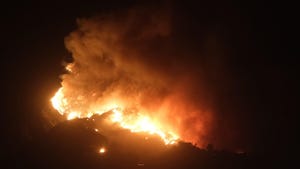Server Noise Issue Is Falling On Deaf EarsServer Noise Issue Is Falling On Deaf Ears
True, typically nobody sits in front of a serverbut that doesn't mean that server ergonomics can be ignored, especially fan noise. In a small office, there is no escaping that noise. But there is little evidence that the vendors take the issue seriously.

True, typically nobody sits in front of a serverbut that doesn't mean that server ergonomics can be ignored, especially fan noise. In a small office, there is no escaping that noise. But there is little evidence that the vendors take the issue seriously.The most obvious counter-example is the Fujitsu TX150, a compact tower server touted as emitting only 32 decibels when running, and 28 when idling. Reportedly, it uses a heat pipe to cool the CPU, reducing the need for fans.
By comparison, a leaf rustling in the wind is usually rated at 10 decibels, and normal conversation tips the scale between 40 and 60 decibels.
Another counter-example is the Dell PowerEdge T105, rated at 38 decibels (or, to parrot the spec, "3.8 bels declared A-weighted sound power.") But the Dell example underscores the problema Google search produced no evidence that Dell promotes the T105 on the basis of its low noise level.
In fact, the noise rating had to be excavated using Dell's online Data Center Capacity Planner, which lists the power consumption, heat dissipation, air flow, amperage, wattage, and noise power of each server. (Dell's environmental data sheets often simply refer to the calculator rather than listing a value.) Clicking through the list often showed bels above 5, sometimes reaching 8, for other PowerEdge units.
We'll be looking at other vendors in the future. If anyone knows other counter-examples, let's hear about it (i.e., before we go deaf.)
Go to the bMighty Server How-To Center
About the Author
You May Also Like




